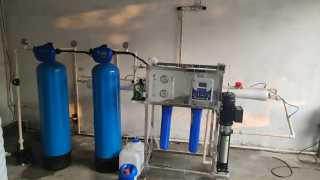As the world’s population increases, the demand for safe drinking water becomes more challenging to meet. Approximately 26% of the world’s population doesn’t have access to safe water, making it more vital than ever to ensure the water we have remains clean and drinkable.
Types of Water Pollution
Water pollution not only endangers human health but also puts entire ecosystems at risk. Contaminated water degrades quality and becomes toxic to both humans and the environment.
Groundwater Pollution Many people rely on groundwater found underground in the spaces between soil and fractured rock. The ground can absorb pesticides, fertilizers, and untreated waste from septic tanks, compromising water safety. Groundwater pollution poses significant risks to human health, particularly in areas dependent on these sources for drinking water, like rural India.
Chemical Pollution Chemical pollution is the most common culprit in water contamination. Industrial sites, heavy metals, and solvents contribute significantly to this issue. Contaminants like arsenic, fracking fluids, lead, PFAS, and nitrates can find their way into drinking water, posing severe health risks.
Nutrient Pollution While nutrients such as calcium, fluoride, and magnesium are essential, an overabundance can harm ecosystems. Fertilizers and other pollutants can block sunlight, stunting the growth of underwater organisms and disrupting aquatic environments.
Microbiological Pollution Bacteria, viruses, and protozoa contribute to microbiological contamination. These microorganisms, found in human and animal waste, can cause life-threatening diseases if not properly treated. Many developing countries like India lack adequate water treatment systems, increasing the risk of waterborne illnesses.
Suspended Matter Pollution Suspended particles from soil erosion, runoff, and algae blooms interfere with water chemistry and microbiology. They can settle at the bottom, damaging underwater life, or float on the surface, blocking oxygen and sunlight.
Thermal Pollution and Oxygen Depletion Human activities and natural occurrences can change water temperatures, degrading its quality. Algal blooms, a form of contamination, consume oxygen, creating dead zones in aquatic environments. These blooms release toxins that endanger human and animal health, causing gastrointestinal issues, liver damage, and neurological effects.
Effects of Water Pollution
Water pollution has dire consequences for both human health and the environment.
Health Limited access to clean water leads to various illnesses, with children being the most vulnerable. The World Health Organization (WHO) attributes 80% of the world’s diseases and 50% of child deaths to poor drinking water quality. Low-income communities face the highest risk of water-related illnesses due to proximity to pollution sources. Contaminants in drinking water can lead to long-term health issues, including hormone disruption and cancer.
Environmental A healthy ecosystem requires balanced interactions among all organisms. Water pollution disrupts this balance, causing algal blooms that deplete oxygen and create dead zones. Heavy metals and chemicals from industrial sites are toxic to aquatic life and can enter the human food chain through fish consumption. Solid debris like plastic bags and soda cans can strangle and suffocate wildlife.
What can you do to help?
Water pollution is a global problem that requires collective action. Here are steps you can take to ensure access to clean drinking water:
- Minimize use of everyday products containing harmful toxins.
- Properly dispose of chemicals and nonbiodegradable materials.
- Reduce plastic consumption and use minimal cleaning chemicals.
- Support strong and effective clean water laws.
- Back water conservation and environmental organizations.
Community Pure Water is dedicated to ending the water crisis in India using sustainable and holistic methods. Our projects aim to provide safe, purified water to communities in need, create jobs, and promote local economic growth. Everyone deserves safe, clean water—let’s work together to make this a reality.








